Steph W. from SEOPressor


...help you check your website and tell you exactly how to rank higher?


94
score %
SEO Score

Found us from search engine?
We rank high, you can too.
SEOPressor helps you to optimize your on-page SEO for higher & improved search ranking.
By allysa on July 28, 2016

If you’re looking to deliver quality content that drives organic traffic, you need to be consistent in delivering ideas that your users will value. This means offering insight, unique perspectives, and actionable advice, all of which content marketing ideas that help people searching within your niche finding the answers they’re looking for.
Chances are, you came across this blog looking for “ideas for blog posts” on Google. Well, in this blog post, I’m not going to just give you the ideas. There are an infinite number of possibilities, topic areas, and specialisms.
However, I will help you come up with more of your own ideas. First, though, let me show you how to present them effectively to maximize the traffic you attract.
What’s more, I’ll also show you what resources that you can use to find hot trending topics that will generate traffic for your site and guide you in which of your ideas to post.
Now, when it comes to blogs, there are 4 elements that you should know about a basic blog post.
This is the first thing that your readers will notice. Therefore, it should be attention grabbing that it immediately tells the readers what is the blog post about, who will benefits from this, and how. The key here is actionable, intriguing, and emphatic.
Here, I’ll use my title as an example: 10 Ways We Generate Amazing Content Marketing Ideas For Blog.
Let’s break it down.

10 Ways … – You know immediately there will be 10 steps that we’ll be showing you to achieve something.
…We … – By using ‘We‘ in the title also makes readers feel closer to you. Instead of just showing them how they should do it, we’re showing the readers the way we do it so that they can learn from our experience.
…Generate … – This tells you the actionable content.
…Amazing … – This is the emphasis. They’re not OK ideas, or good ideas, or acceptable ideas, or even just ideas. They’re amazing. A little hyperbole goes a long way. Too much, however, is toxic.
…Content Marketing … – You know immediately what genre or topic are the blog is in. I’d personally call context. This tells you we’re going to try to make your blog more professional and successful, not just better written, or more inspiring to the readers who find it by typing in the wrong URL and get hooked.
…Ideas For Blog – This gives the reader a focus. Content marketing is a huge field. I’ve gone from general to specific here, so people know the precise facet of content marketing covered.
The introduction tells people what to expect from your blog post and why they should read more. It tells people what are the benefits that they can get by reading your blog post. By giving a clear introduction, you set the terms of engagement from there. Instead of letting readers simply imagine what the content might be, this helps to prevent disappointment.
If you do all these things, and concisely, you’ll hook the readers and they’ll be willing to invest their precious time and energy in what you have to say.
The main body is the meat of your blog post. No matter the structure, you should make sure there is a clear flow of one point to the next point.
You should address no more than one point per paragraph and make sure each paragraph connects to the one before it, and the one after it. By retaining a logical sequence, you will stand a better chance of holding your readers’ attentions.
You conclusion should recap the points, reminding the readers of why those points were made, and the difference they will make. A good conclusion should also include a strong Call-To-Action (CTA) that inspires the readers to take what they’ve learned and apply it out in the real world.
Even better, you can ask questions at the end of your blog post to get your readers’ opinion.
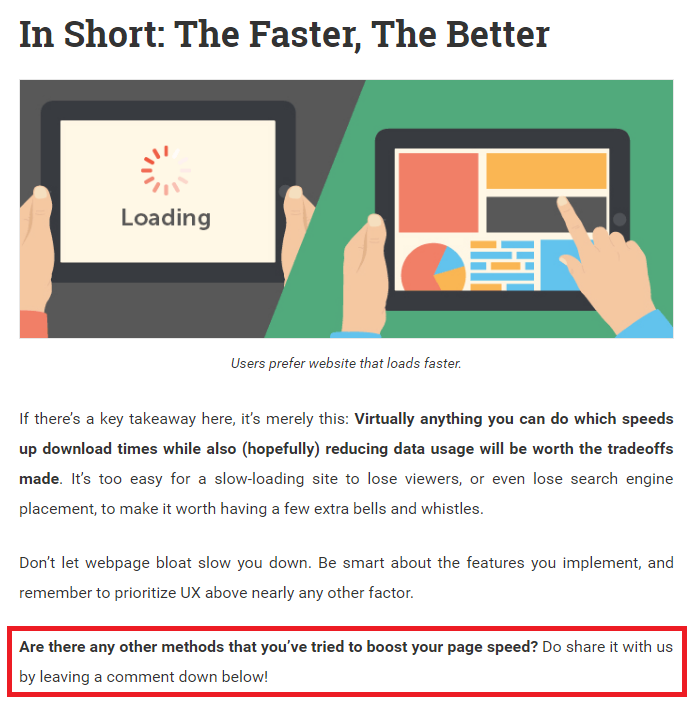
Asking questions at the end of your blog post can help to spark comments from the readers.
Just like this:

Interaction with the readers helps to improve user experience through your content as well.
The most concise version of this advice I’ve heard is: say what you’re gonna say, say it, then say what you said.
So these are the basics you need to have covered in your blog post for anyone to understand your great ideas. This is a skeletal structure, think of it like the framework of a building.
There are many formats out there that deliver a unique and rewarding experience to the readers. But everyone reads in a different way.
While some sites aim to create exclusive list based content, others are known for high-powered, long-form editorials. I’d say you’re better off spread-betting and using a variety of different formats to attract the maximum variety of audiences.
When it comes to engaging your audiences with the body of your blog, create a format that splits up the content and makes it easier to read will give you a huge advantage.
To demonstrate, I’ll create a post within a post!
Look at this! List posts are great. Readers love them, and more importantly for you, they’re easy to plan and structure. What’s more, readers will find them valuable even if only a couple of points apply to them.
In a list post, if you cover key points that your readers already know, it reinforces their expertise and makes them feel good. Additionally, list posting is also more about adding your unique perspective to existing content. People want to find out what you think about something, not just knowing what something is.
List posts can be short or long and will usually consist of numbered subheadings (like this blog post that I’m writing) with anything from a couple of sentences to several paragraphs for each listing.
This is a genius way to make sure other people do most of the work for you without even realizing it. But of course, you have to get connected.
The good thing is that experts love to be known as experts and you can offer them a platform. In exchange, they give you exclusive content. Namely, their insights and unique perspectives.
By bringing a couple of experts together and getting their individual thoughts on a few key points, you play the part of a content curator, as well as establishing yourself on a similar level to the experts. Especially if you can challenge them with great questions.
If you don’t have the connections to talk personally with the influencers in the industry, take the advice they have posted, link to it and comment on it yourself.
When you can identify trends across experts, you’ll be doing the hard work and showing the value to your readers in a fraction of the time it would take them to do this work themselves.
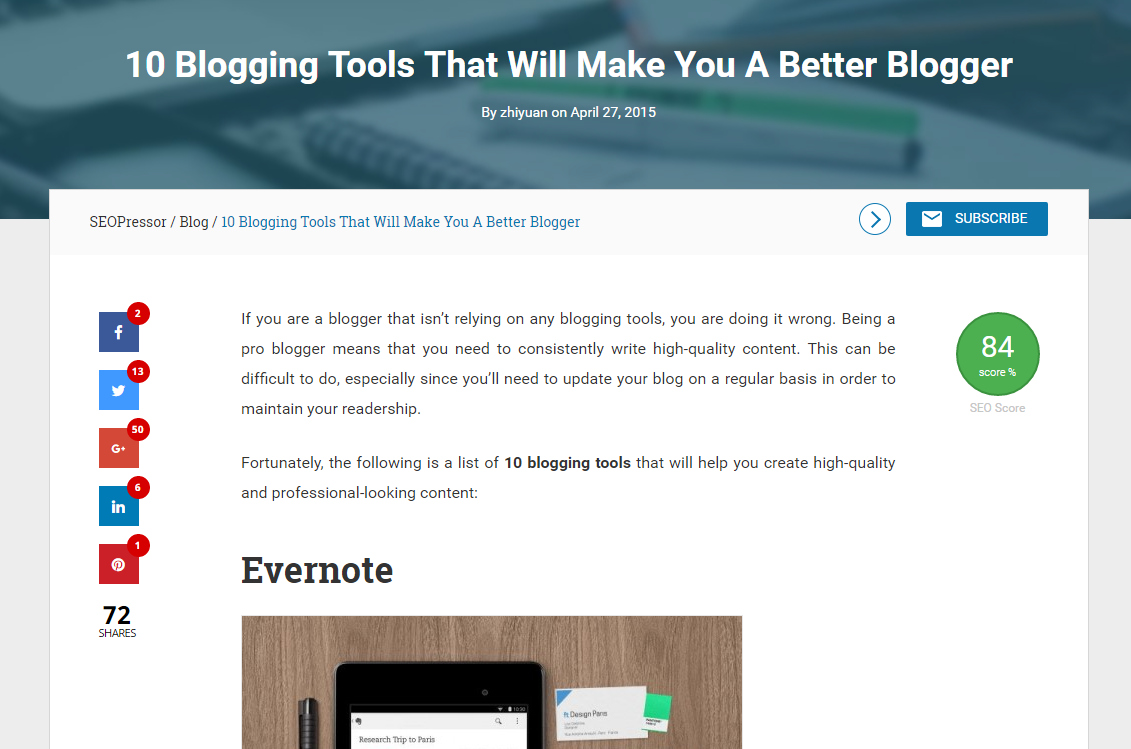
Read more at https://seopressor.com/blog/10-pro-blogging-tools/
A review or recommendation post begins by introducing and briefly explaining the product or service and ends with a verdict on whether or not the product or service is a good purchase.
A review should give the impression of expertise, impartiality, and insight. The ideas are for you to create actionable consumer advice on purchasing decisions. This means that you identify the advantages and disadvantages of a produce or service, while conclusively coming down on one side or the other.
A recommendation can be more straightforward, and often shorter. This allows you to simply identify the unique selling points of a product or service, where to buy it or get the best deal.
One superior format for recommendations is the direct comparison review. Find a competing product and create an impartial guide to how the product in question stacks up against its competitors.
Make it clear on what you’re recommending and try to include the link in your introduction, body, and conclusion to make sure users are given every chance to click it.
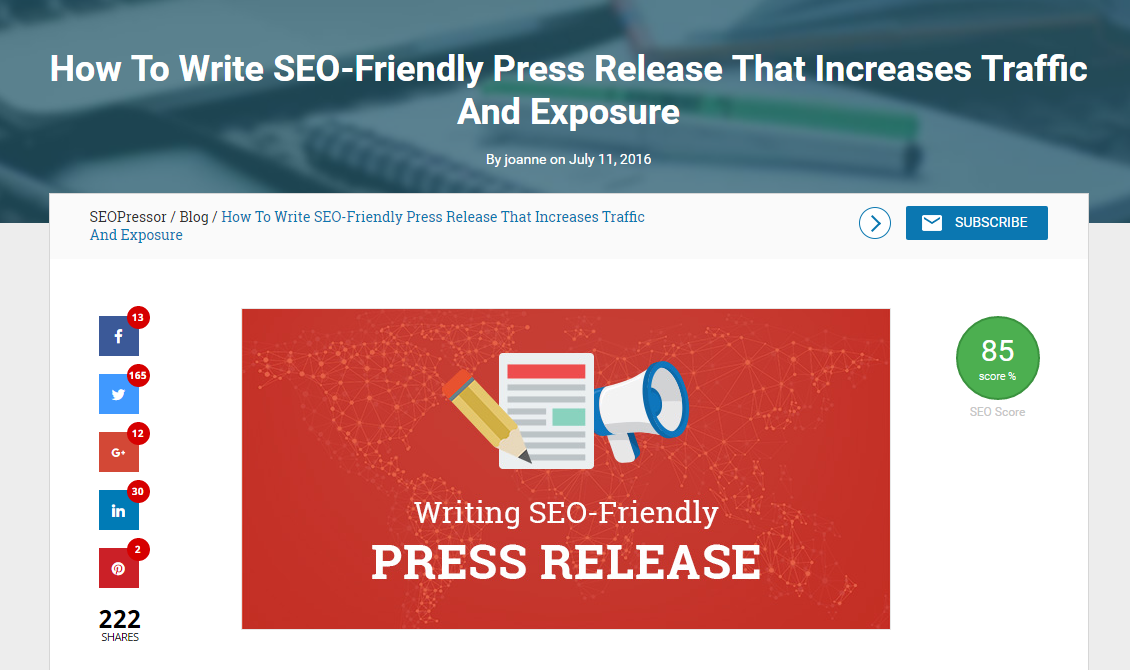
Read more at https://seopressor.com/blog/how-to-write-seo-friendly-press-release-that-increases-traffic-and-exposure/
How-to posts allow you to show your strengths and help people get better at something that you’re already good at. You pass on the learning from your own mistakes and experience and help people short-cut their way to better results. It’s doing your readers a favor they will appreciate.
To achieve a great how-to blog post, you need to put yourself in the mind of a beginner on a topic you’re expert in. Then explain it to them in step-by-step instructions and how you get through your day and produce your best results.
Then, look back over those and don’t leave out a thing. Every element that has value should be included.
Once you’ve done that, sum up the process into 3-7 key steps or phases. This will ensure that readers can absorb the information into an easily learnable and repeatable structure. Without this, readers may become overwhelmed, confused, or frustrated.
“Wait! What about the structure? I came here for ideas – amazing ideas. The best blog ideas known to man!” you said.
Well, we’re about to get started.
Search Engine Optimization (SEO) is an essential strategic tool for any website that wants to generate more traffic. Despite the technical sounding name and the rather dry statistical tools, it’s helpful to conceptualize SEO in your creative brain as being ‘audience focused’.
To make sure all of our content is SEO-optimized, we use SEOPressor Connect.
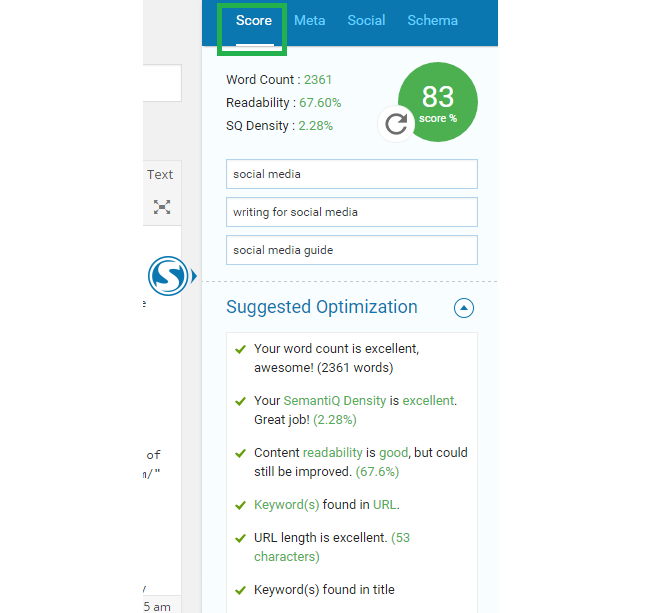
SEOPressor is like a checklist for us to analyze the steps that we’ve overlooked to improve our on-page SEO.
You’re trying to discover what people are looking for so that you can provide the answers to them. That’s a noble ambition, not a cynical trick.
When you start searching around your niche, you can do your keyword research using Google’s Keyword Planner. This will help you identify what your audiences are looking for, which may surprise you. It also puts the pressure of generating topics areas onto the audiences, not onto you.
If you’re focusing on providing value rather than originality, you can maximize your utility to your readers, which is how you build a loyal audience. Also, once you’re no longer stressed about plucking topics from thin air, you can focus on making the writing as good as it can be.
Trello and CoSchedule are both great content calendars that allow you to strategize in advance when you’re going to create, edit, and publish your content. This helps to prevent you having to hold a huge number of competing agendas in your head simultaneously and improves your focus.
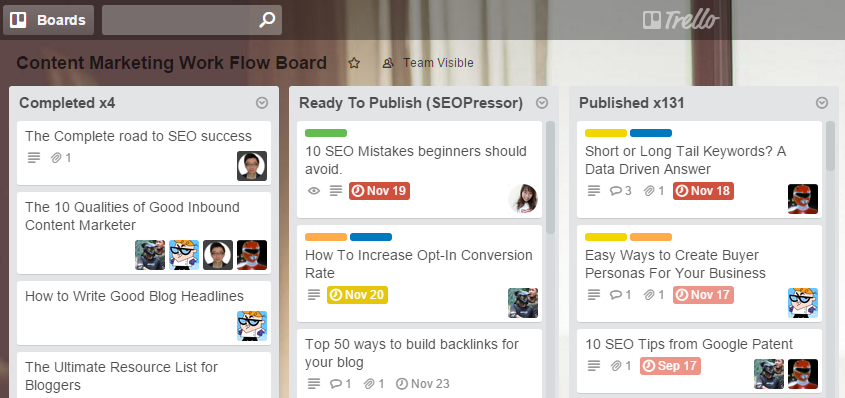
This is how we keep up with our content marketing schedule in SEOPressor.
This also helps to ensure you aren’t repeating similar content too closely in your schedule, which can lead to angry readers accusing you of self-plagiarism.
Other than that, you can also use Evernote to capture ideas as soon as you have them so you can come back to them later.
True facts: We have created an awesome Blog Title Generator that can help you improve the titles you’ve already thought of, and even helping you generate new titles for high performing blog posts you hadn’t even realized people wanted.
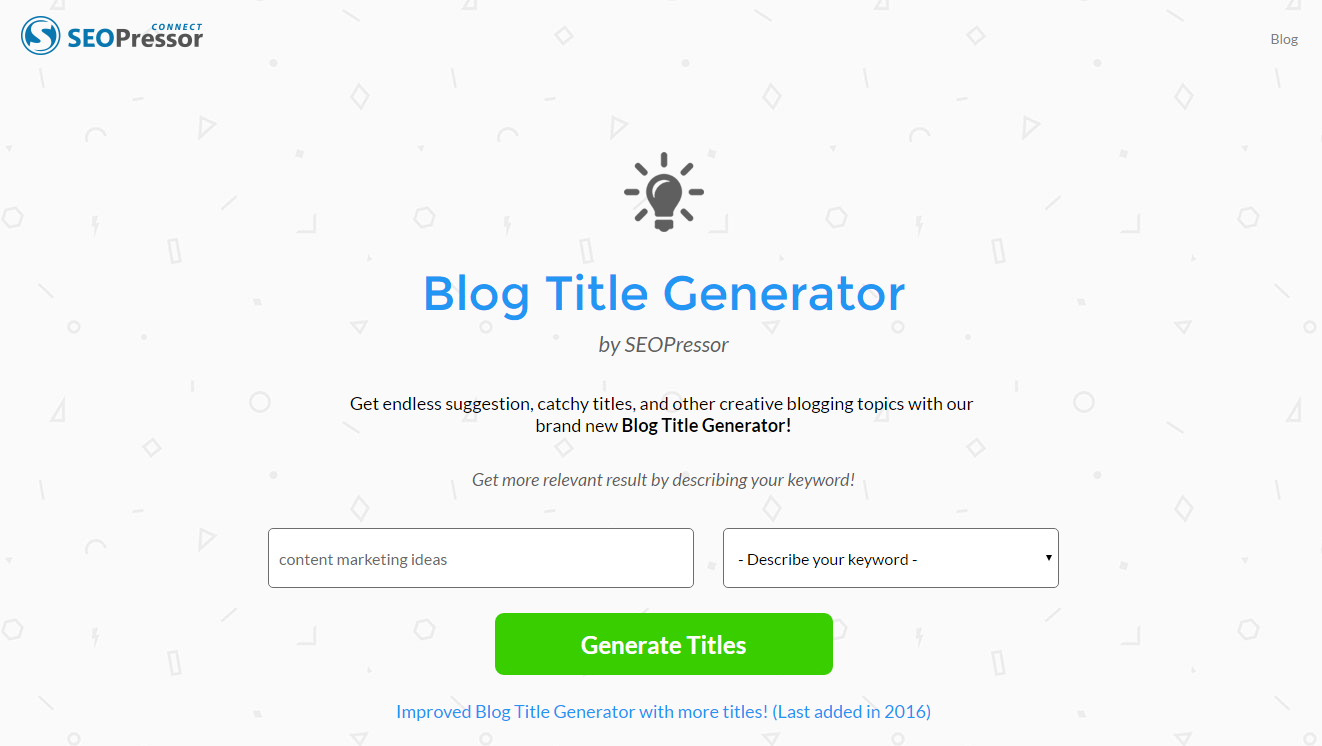
Blog Title Generator is a free tool that we’ve created for bloggers and content marketers.
Your title is the most important part of getting people to your site to read your content so you have to make it great. I’ve given you an idea of how to do that for yourself in this very post, but that won’t help you if you don’t even know what the subject is yet. This generator can go to that next level.
Facebook and Twitter have both put trends at the heart of their news feed. This trending data is presented to all users according to what they like and post about so you never get a full picture.
But presuming you’re posting about your topic area and following others who do too (if you aren’t, you really should be), then these trending feeds should give you a great idea of what people care about right now.
Other than social media, you can also have a look at Google Trends.

As you can see, Pokemon Go is the latest hype right now.
This is called bandwagoning, and provided that you have something useful to say or a different perspective to offer, you can create great traffic in a short term. Link these posts into your broader content and you can see a big increase in your traffic.
If you can dig up the archive of a competitor’s site, you’ll find that they have likely covered a lot of topics with information that is now out of date. Online news moves very quickly, and even if content is just a couple of months old, there will be a breakthrough you can focus on that will give you a more current and valuable take on their ideas.
SEMrush is a tool that allows you to do so.

In SEMrush, you can enter your competitors’ content into an analytic research tool that will pull out of the best performing posts, the strongest organic keywords, and the newest content.
You have to believe you’re capable of producing better, more valuable content than what is already out there in your niche. This strategy helps you demonstrate to readers just how good you are.

Quora is a question and answer site where the content is arranged by topic areas. It aims to be a resource center and peer-to-peer help desk for life. People ask questions and receive answers from the community.
From there, you can find the questions you can answer, and instead, write a full blog about it. On Quora, you can even find out what’s the hottest and most contentious questions are. Then, write your blog and link to your article on the topic to get guaranteed targeted traffic. Pretty neat.

BuzzSumo is an amazing tool for knowing your enemy. It enables anyone to find out the best-performing articles on any site in a given time frame.
Enter Forbes.com, and you’ll find out exactly what’s working for them right now. You can use this to generate your own content based on what trends you can identify across multiple sites or you can use it to fill gaps by pitching guest blogs and massively increasing your profile with the influencers.

Reddit is one of the biggest online communities in the world and it’s all about discussing things people have seen and read online. Again, trending data is a huge part of what informs which trends are popular.
You can use this to understand what people are most passionate about. Writing a strongly opinionated piece on something is a great way to insert yourself into that discussion and ally yourself with the stronger action. This allows you to direct pre-existing online energy to your site.
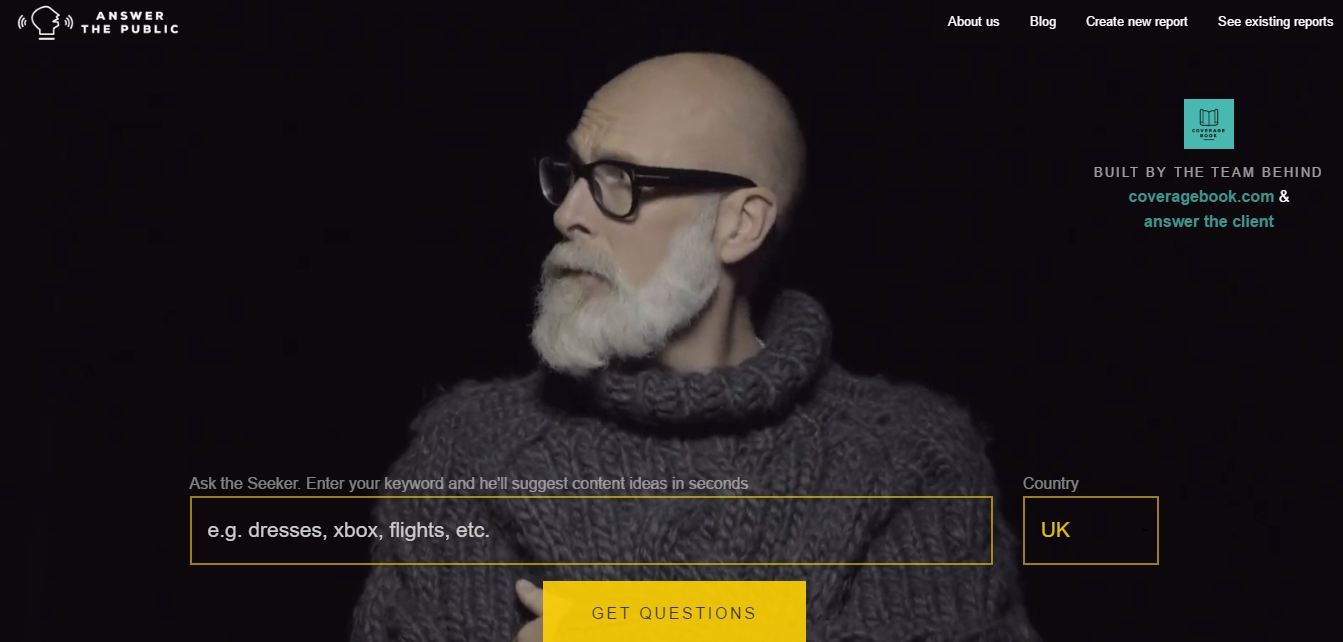
This site helps you see what language people are using when asking questions online, allowing you to mirror that language successfully.
This will enable you to understand how people want certain questions answers so that you can further target your content.
So here we are, at the conclusion.
We’ve discussed the different formats you can use and why you should use them as well as what topics they’re good for covering, and how they can help you make money in certain circumstances. We’ve also looked at how to take the creative pressure off your brain in generating new and original content using specific tools and approaches.
The key that I’d like you to remember from this post is: be useful above all. You must absolutely try to be informative, entertaining, even endearing.
There are no golden secrets to hacking the universe, there are only steps forward on the journey. If you’re a step ahead of anyone on any journey, telling them to watch out for that potholes or puddles, or showing them the quickest route, or even just sharing how difficult it is and what you struggled with, will be useful to others on that journey.
That said, no one wants directions to a place they aren’t going. You can be the most useful to audiences by lighting the path they’re already on. These research tools and formatting tips give you a tried and tested, best practice to do that. Now, get out there and light some torches up!
Again, a simple conclusion and Call-To-Action (CTA) at the end will help generate discussion. Have I missed out something crucial in the list? If you have more content marketing ideas that you’d like to share, tell me about it in the comments!
Updated: 19 December 2025


Save thousands of dollars (it’s 100x cheaper)

Zero risk of Google penalty (it’s Google-approved)

Boost your rankings (proven by case studies)
Rank High With This Link Strategy
Precise, Simplified, Fast Internal Linking.
